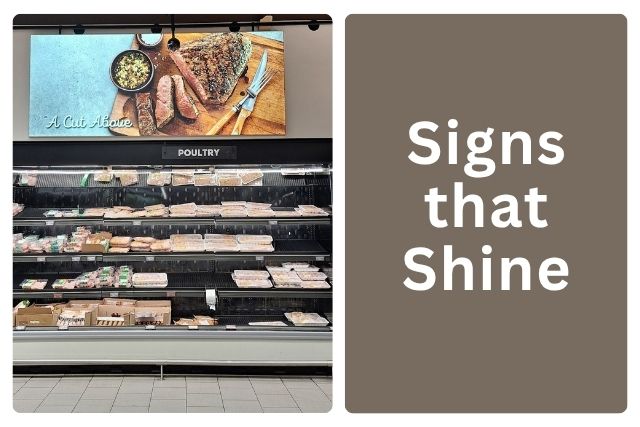I’ve become an Aldi nerd over the past year. The prices, selection, store size, and simplicity of the Aldi shopping experience keep me coming back for more. Today I wasn’t going to stop into Aldi. But at 7:30 p.m. I had a sudden cookie jones. And after perusing the treat aisles of Shoprite, I found nothing of reasonable quantity in the way of cookies, for less than $7. So, into Aldi I went… to be greeted by the most lovely store signage displays, all about the store. Bestill my copywriter’s heart!
I have no idea how long those signs were there. But on a night when I popped in with no shopping list and an open schedule, the signage jumped out at me. Signage is subliminal… you don’t always notice it in a conscious way.
Aldi is a smallish, cozy store. If you were to run around doing something slightly unusual, like snapping photos of the signage, people would notice. So I made sure to let the workers who were busy stocking know that I was going to be doing that, if it was okay with them. They said to go ahead.
So, I ran around fully appreciating each of the signage displays that now graced every section of the store. And that made me actually think… what was here before? Anything? Well… no matter. Today I noticed the signs, so I simply had to take some pics.
Aldi Signage at the Pburg Store… Look at These Beauties!!
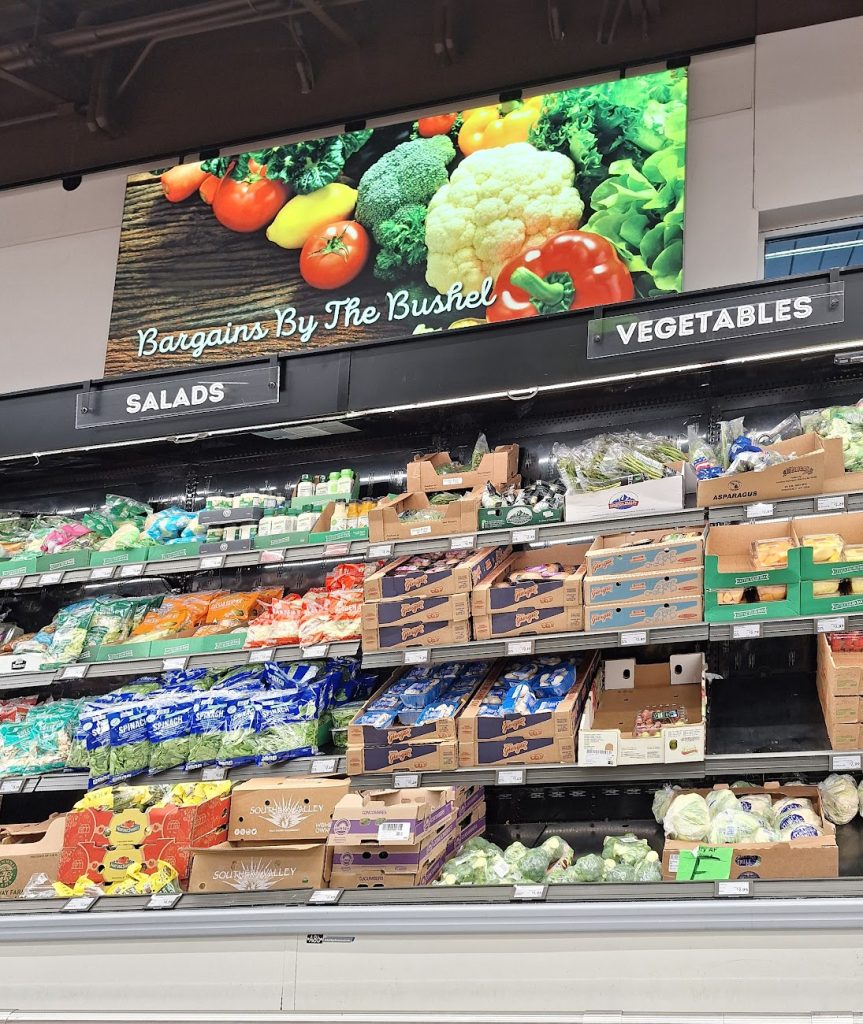
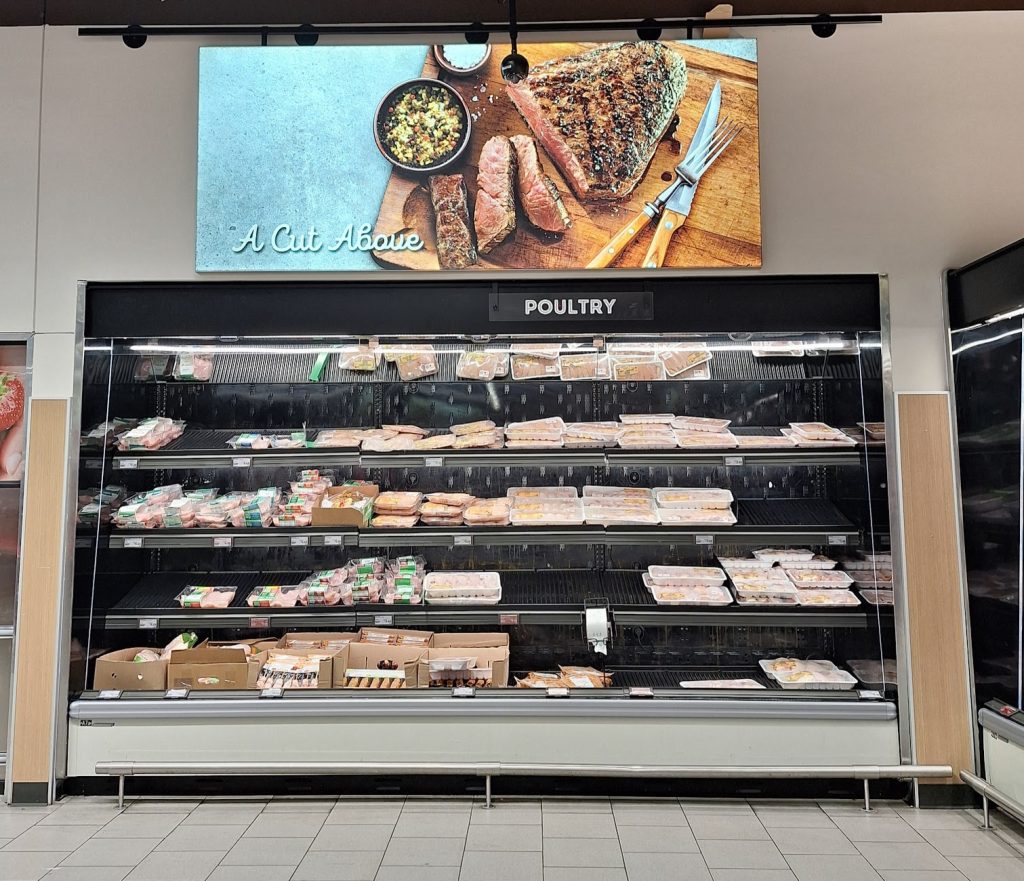
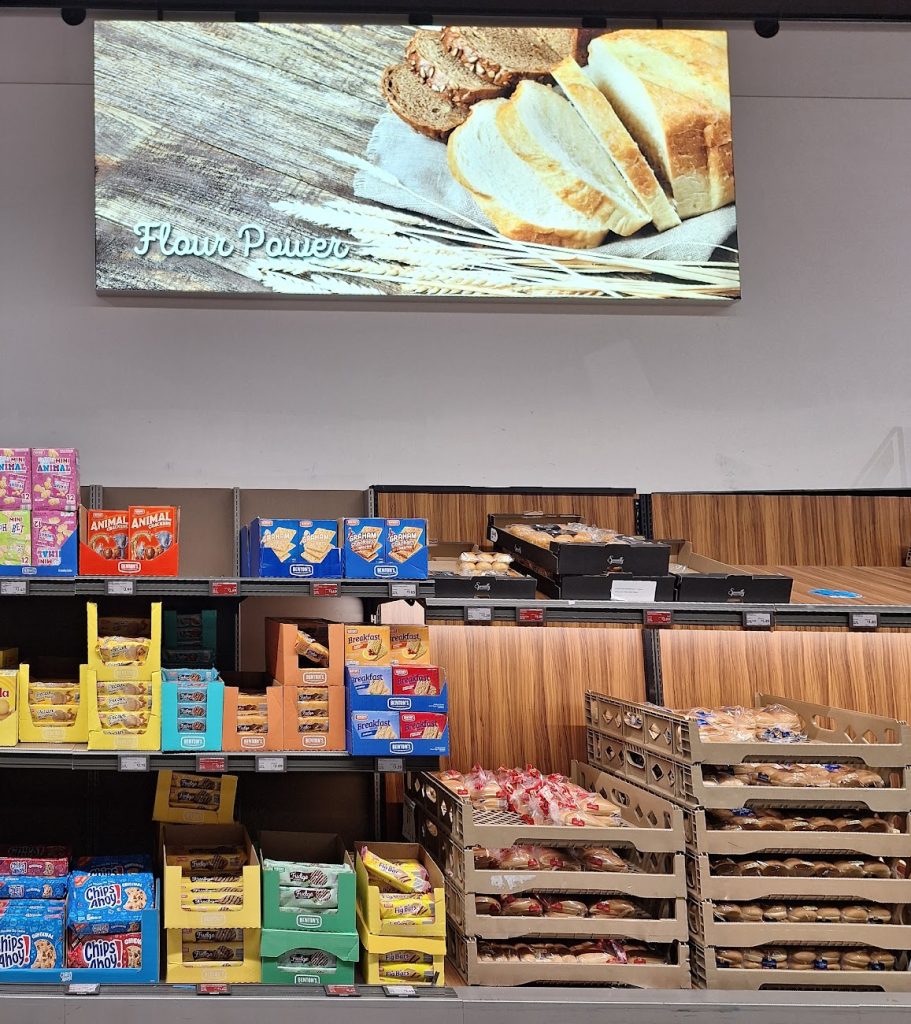
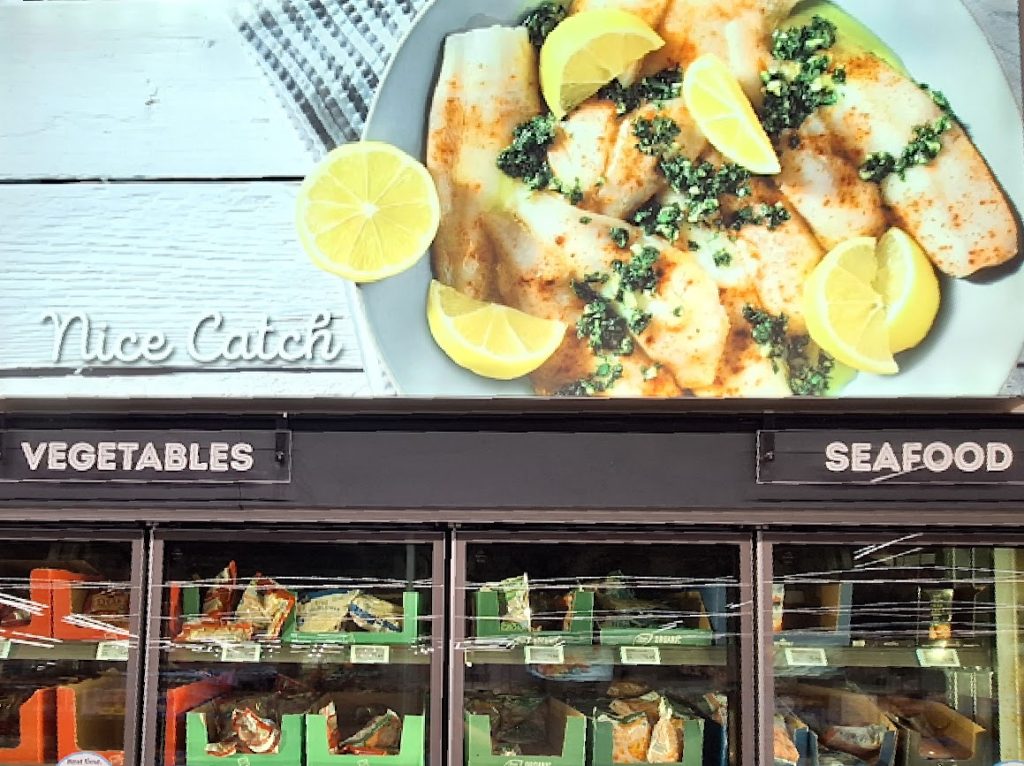
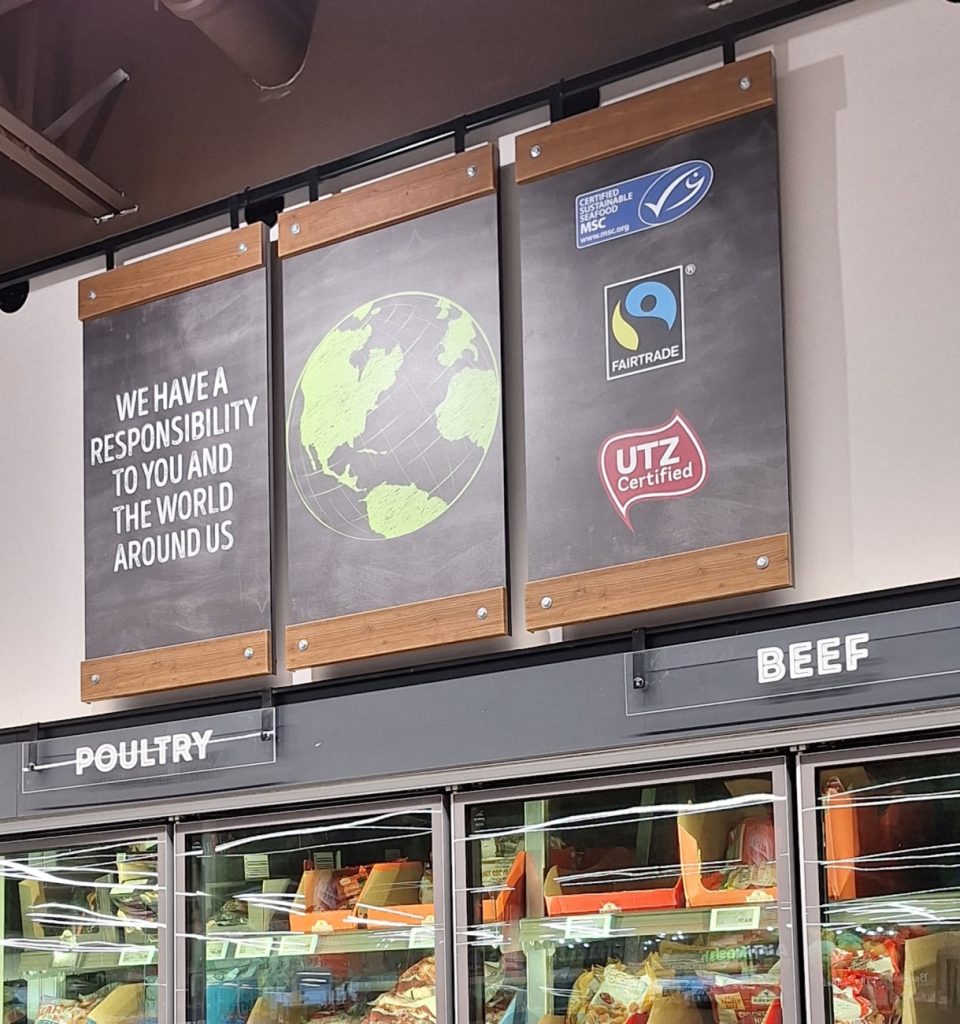
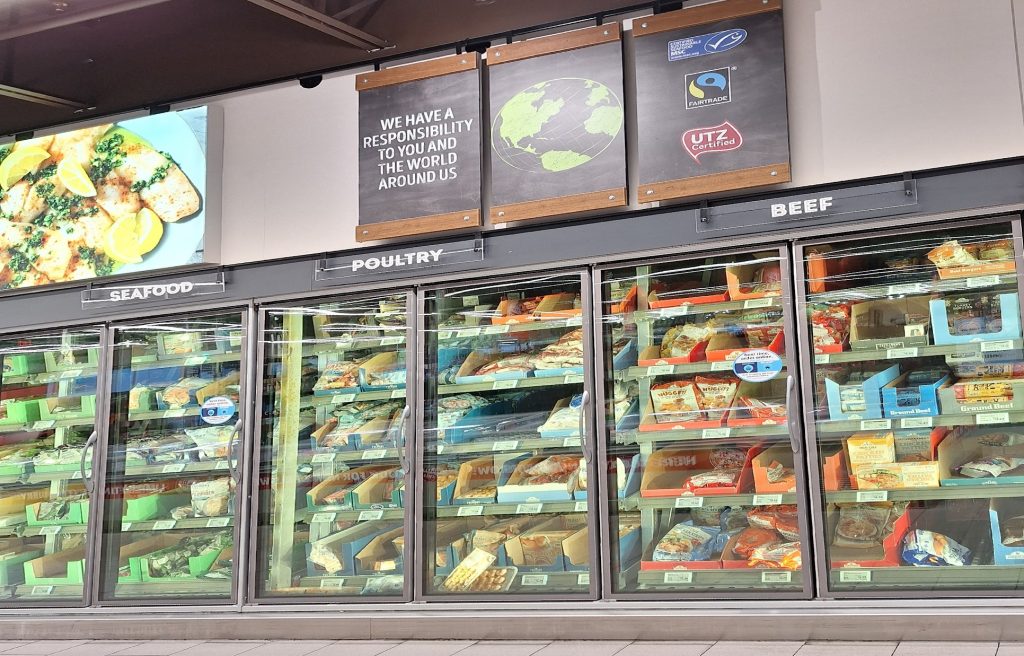
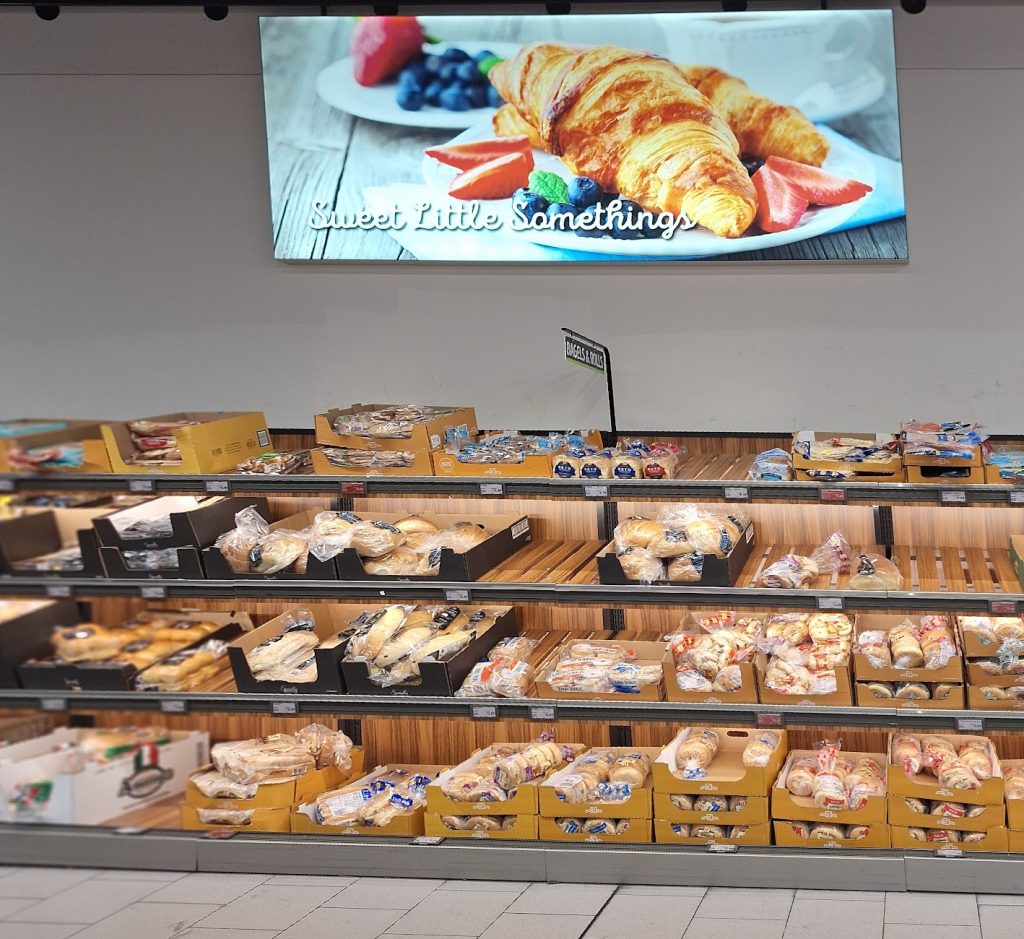
Who writes the words that appear on store signage?
It depends on the company, but if there’s a creative team, usually the copywriters get assigned to write the message that will go on the sign. If no copywriters exist because it’s a smaller company, then the graphic designers might conceptualize the signage on their own, or with guidance from the company’s creative director.
The company itself might also make suggestions as to what kind of wording they’d like to appear on the signs. Again, this is based on how many employees they have, and how directly involved the principals might be in the branding initiative.
Bigger corporations, like Fortune 500 companies, might employ an in-house marketing and/or creative department, some of whom will be involved in signage projects.
They might also opt to outsource the signage to an outside branding or marketing agency.
How do companies decide what will appear on their in-store and POS (point of sale) signage?
Here’s how things generally go when there’s a signage project underway.
There will be a creative meeting of the minds, to discuss objectives. The audience will be defined, if it hasn’t been already. (Fun fact: the more white space on a marketing piece, the more prestigious the brand.)
The graphic designers and copywriters ( or branding strategists) will discuss the visuals and message. They’ll take into consideration demographics like age, gender if applicable, income bracket, values.
Writing tone comes into play here. What type of language does the target customer use? Are they young and trendy? Seniors with traditional values and manner of speaking?
Promotional versus descriptive will also be considered. If the sign is simply meant to serve as a decorative label, you’ll have more room for creative license. If it’s purposed to advertise a promotional offer, you’ll want to focus mostly on the type treatment and a simple message, keeping visuals to a minimum.
What is the underlying theme that’s to be conveyed via the store signage? Will this be done through the images, words, or both?
A great example of signage that incorporates values was when Target launched an inclusivity theme on their fashion signs. Getting to see real women of different sizes, shapes, styles and ethnicities, sporting seasonal fashions, really brought home the body-positive message.
What’s the workflow of signage creation?
- Each set of in-store signs will require a unique job jacket with associated files.
- The graphic designer who is appointed project lead on a particular signage job will work up the design. They’ll commonly add dummy text in a font and type treatment of their choosing. Or, font and color selections might already be established with a seasonal mock-up that the creative team has pre-approved.
- After the designers draft the sign, the job jacket containing all project specs, and a printout of the draft, is passed to the copywriting team. Whomever has been assigned to the job will open the file on their computer, type in the text, and then pass it back to the designer for tweaks to fit the space.
- Next, the designer makes his or her changes, and prints the file again to be reviewed by the copy team. If edits are needed, the writer will again open the file and type their edits. Or, they might be asked to use a red pen and line-edit directly on the document. The copywriter then makes the changes and signs off this round.
- The signage might go to the marketing or branding department to be reviewed again. They will approve the current wording, or request a change. It’s common in advertising departments, for a change in creative direction to come from higher-ups once the job goes to the DMs for review.
- After upper management signs off on the job, the final printout and proofreading phase gets underway. The copywriter looks closely for miniscule errors, and the designer then takes back the document to make sure elements of the design weren’t disturbed.
(Most people don’t realize just how many brains and hands get involved in creating signage for a retail store.)
There will be times when signage jobs come through the creative department, and there isn’t a whole lot of direction on what the copy should say. In that case, the copywriter may be able to get a little creative.
At other times, the copywriter will be handed specific instructions how to word the sign, based on what upper management has in mind. It really depends on what’s happening with other aspects of the creative campaign.
Good to know: in advertising, seasonal signage is developed two seasons ahead, to accommodate for production and printing time. Christmas and holiday store signage get worked on during the summer, imagine that!
Copywriter Dina Gio didn’t truly appreciate good in-store signage until she was made responsible for the wording of signs at the world’s biggest toy store and its sister stores. Advertising talent runs in the family: her brother, Bob, spent a few decades of his life designing and printing signs as his profession.
For a copywriting quote, email dinagio@dinagio.com.

